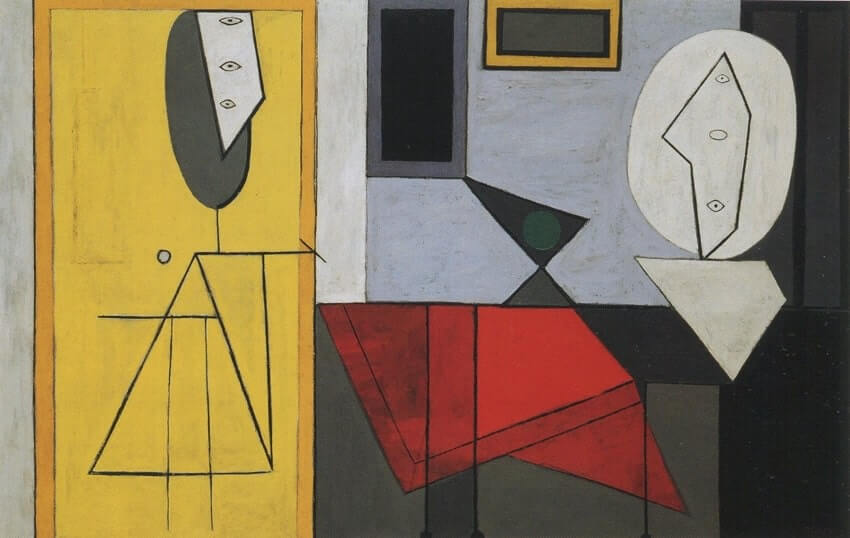The Studio, 1928 by Pablo Picasso

From 1927 to 1929 Pablo Picasso elaborated a complex discourse on the activity of the artist through the theme of the studio. Among the variations in the series, the closest to the present example is The Studio of 1928. The works share the vivid palette of Synthetic Cubism, limited to draw attention to a conspicuous and authoritative execution in planar areas.
In The Studio, the subject matter itself, as well as the organization of the space and composition instantly recalls studio scenes of The Art of Painting by Johannes Vermeer.
In Vermeer's painting we look into the cube-like space of an artist's studio. This space is defined for us on all six sides. The back wall faces us directly. The front wall is expressed by the heavy curtain drawn aside to let us look within the space as if it were a stage. The little cube-shaped world is wonderfully self-contained. There is no feeling that the various objects are rigidly placed, but their relationship in space is so perfect that if we try to shift any one of them the serene balance of the picture is disturbed.
Picasso's The Studio, is such a close parallel to the Johannes Vermeer that it might almost have been painted to demonstrate how the Vermeer could be translated into abstract terms. Picasso constructs the figure of the painter in a few dark lines played against the light field of the canvas he is about to work on. Vermeer constructs the figure of his painter as a dark silhouette, also played in part against the creamy field of his canvas, upon which he has just begun to work. Both painters hold their brushes in a moment's pause. The "brush" in the Picasso is the short diagonal line terminating the "arm" that projects horizontally toward the right. Whereas Vermeer's artist has just stayed his hand to glance at the model.
















